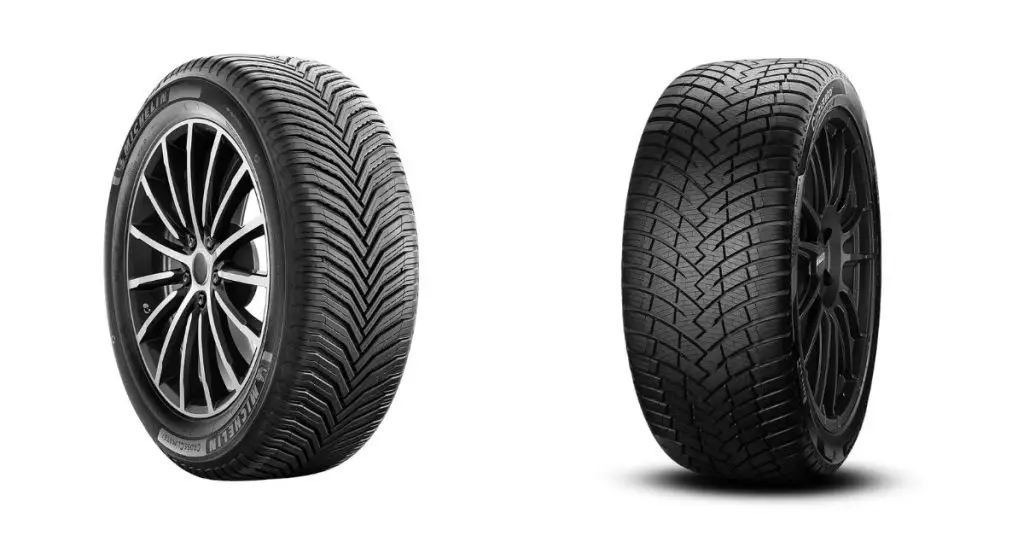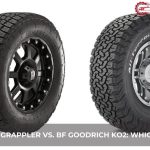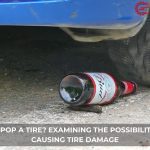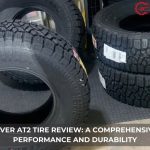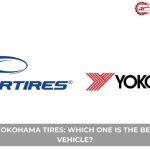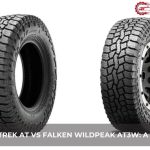In the world of all-season tires, the battle for supremacy is fierce, and two names often come up as top contenders: Michelin CrossClimate 2 and Pirelli Cinturato WeatherActive. As drivers, we’re always on the lookout for tires that offer not just durability and performance, but also safety, regardless of the weather conditions. It’s a decision that can impact our driving experience significantly.
Choosing the right tire is more than just a matter of preference; it’s about understanding what each brand brings to the road. The Michelin CrossClimate 2 and Pirelli Cinturato WeatherActive promise to deliver exceptional performance across various terrains and weather conditions. But how do they really stack up against each other?
We’ve dived into the specifics of these two tire giants to help you make an informed decision. Let’s explore what sets them apart and which might be the best fit for your vehicle and driving needs.
Michelin CrossClimate 2 Overview
Continuing with our exploration of top-tier all-season tires, let’s delve into the specifics of the Michelin CrossClimate 2. This particular tire has garnered attention for its innovative design and performance across a wide spectrum of driving conditions. Renowned for its versatility, the Michelin CrossClimate 2 distinguishes itself with a unique set of features aimed at enhancing driver experience.
Firstly, the Michelin CrossClimate 2 is engineered with a focus on longevity. Michelin’s proprietary rubber compounds contribute to a tire that not only lasts longer but also maintains its performance characteristics over time. Drivers can expect a blend of durability and reliability, making it an economical choice for those looking to invest in quality tires without frequent replacements.
Performance in diverse weather conditions is another hallmark of the CrossClimate 2. Featuring Michelin’s V-formation tread pattern, the tire offers exceptional grip on wet roads, reducing the risk of hydroplaning. This pattern, combined with the tire’s high-density sipes, improves traction on snow, making it a reliable option for drivers in regions with unpredictable weather. Moreover, its certification for use in severe snow conditions, marked by the Three-Peak Mountain Snowflake (3PMSF) symbol, confirms its capabilities in winter weather beyond that of a typical all-season tire.
Comfort and noise reduction have also been prioritized in the design of the CrossClimate 2. Michelin incorporates noise-canceling technology within the tread pattern, contributing to a quieter ride. Additionally, the tire’s optimized footprint evenly distributes forces across the tire surface, enhancing ride comfort by reducing vibrations and impact.
Lastly, fuel efficiency is an aspect where the Michelin CrossClimate 2 shines. Its low rolling resistance design means less energy is required to keep the tire moving, contributing to reduced fuel consumption. This feature is particularly appealing for drivers looking to maximize efficiency and minimize environmental impact.
The Michelin CrossClimate 2 stands out for its durability, all-weather performance, comfort, and fuel efficiency. These attributes make it an excellent choice for drivers seeking a tire that excels across various conditions without compromising on longevity or driving pleasure.
Pirelli Cinturato WeatherActive Overview
Transitioning from the Michelin CrossClimate 2, let’s explore the Pirelli Cinturato WeatherActive to see how it stands as a formidable competitor in the all-season tire segment. Tailored for drivers looking for dependable performance across various weather conditions, the Pirelli Cinturato WeatherActive comes packed with features that underline its commitment to safety, efficiency, and durability.
Known for its innovative approach to tire design, Pirelli has equipped the Cinturato WeatherActive with a unique tread compound that optimizes grip on wet and dry roads alike, reducing the risk of hydroplaning and ensuring consistent performance year-round. The tire’s adaptive compound responds to temperature changes, maintaining flexibility in cold weather and rigidity in the heat, which directly translates to improved safety and handling no matter the season.
Highlighting its all-weather capabilities, the Pirelli Cinturato WeatherActive boasts a tread pattern meticulously designed to evacuate water efficiently, enhancing wet braking and reducing stopping distances significantly. This feature, combined with its wide longitudinal grooves, ensures that drivers experience confident handling and control during heavy rainfalls or on flooded roads.
Fuel efficiency is another area where the Pirelli Cinturato WeatherActive shines. Its low rolling resistance minimizes energy loss, enabling vehicles to consume less fuel and emit fewer CO2 emissions, aligning with environmentally conscious driving practices without compromising on performance.
For drivers concerned about winter driving, the Cinturato WeatherActive offers reassuring winter performance. While it may not have the 3PMSF certification like the Michelin CrossClimate 2, its well-engineered tread design and sipe positioning allow for commendable traction and grip on light snow and icy surfaces, making it a versatile option for regions experiencing mild to moderate winter conditions.
By comparing these distinct characteristics of the Pirelli Cinturato WeatherActive, we gain a comprehensive understanding of its place in the all-season tire market, offering a blend of safety, performance, and environmental sustainability that caters to a wide range of driving needs.
Head-to-Head Comparison
Transitioning from our detailed review of both the Michelin CrossClimate 2 and Pirelli Cinturato WeatherActive, we’re ready to dive into a head-to-head comparison of these two distinguished tires. Our goal is to outline the distinct advantages and considerations to help you decide which tire meets your driving needs more effectively.
Durability and Longevity: Michelin CrossClimate 2 stands out with its promise of lasting performance. Thanks to its specialized rubber compounds, this tire not only endures diverse weather conditions but also maintains its integrity over many miles. In comparison, the Pirelli Cinturato WeatherActive offers robust construction but might fall slightly short in longevity against its Michelin counterpart.
All-Weather Performance: Both tires excel in all-season capabilities; however, they serve different masters. The CrossClimate 2’s 3PMSF certification ensures reliability in severe snow conditions, making it a superior choice for drivers in colder climates. Conversely, the Cinturato WeatherActive, while lacking 3PMSF certification, provides dependable grip and handling in regions with milder winters thanks to its adaptive tread compound.
Comfort and Fuel Efficiency: Michelin incorporates noise-canceling technology and a unique tread design to enhance driving comfort and reduce vibrations. While Pirelli’s focus on efficiency resonates well with environmentally conscious drivers, its tread design also minimizes road noise, yet the Michelin may have an edge in providing a slightly smoother ride.
Safety Features: The Cinturato WeatherActive shines with its wet braking capabilities and excellent water evacuation, ensuring high levels of safety on wet roads. Michelin, with its V-formation tread pattern, also offers impressive wet and dry grip but the Pirelli might offer superior performance specifically in heavy rain conditions.
To summarize, our comparison underscores the strengths of the Michelin CrossClimate 2 in durability, snow performance, and comfort, while highlighting the Pirelli Cinturato WeatherActive’s advantages in wet road safety and environmental sustainability. Your choice should align with your primary driving conditions, climate considerations, and performance expectations.
Pros and Cons
Delving into the pros and cons of the Michelin CrossClimate 2 and the Pirelli Cinturato WeatherActive helps us distinguish which tire may best meet specific needs and preferences.
Michelin CrossClimate 2
Pros
- Durability: Known for its longevity, the Michelin CrossClimate 2 offers an exceptional tread life, reducing the need for frequent replacements.
- All-Weather Performance: Its innovative design ensures reliable performance under various conditions, including light snow, making it a versatile option for all-season driving.
- Comfort: Drivers experience a smoother and quieter ride, thanks to the tire’s comfort-focused features.
Cons
- Price: Typically comes at a premium price point compared to other all-season tires, including the Pirelli Cinturato WeatherActive.
- Fuel Efficiency: While it provides reliable performance, there’s a slight trade-off with fuel efficiency due to its robust construction.
Pirelli Cinturato WeatherActive
Pros
- Wet Road Safety: Excels in wet conditions, offering superior grip and safety, which is crucial for drivers in rainy climates.
- Environmental Sustainability: The tire design focuses on reducing environmental impact, appealing to eco-conscious consumers.
- Snow Performance: Without the 3PMSF certification, it may not perform as well in snow compared to the Michelin CrossClimate 2, limiting its versatility in winter conditions.
- Longevity: Although durable, it may not match the extended tread life of the Michelin CrossClimate 2, possibly leading to sooner replacements.
By highlighting the pros and cons of each tire, we aim to simplify the decision-making process for those debating between the Michelin CrossClimate 2 and the Pirelli Cinturato WeatherActive. Considering factors like durability, all-weather performance, comfort, safety features, and environmental impact will guide drivers to choose the tire that aligns closely with their driving conditions and performance expectations.
Conclusion
We’ve taken a deep dive into the Michelin CrossClimate 2 and Pirelli Cinturato WeatherActive tires, weighing their strengths and weaknesses. It’s clear that each tire brings its own set of advantages to the table. Whether you prioritize durability and all-weather capability or lean towards safety and eco-friendliness, your choice will significantly impact your driving experience. Remember, the right tire for you depends on your specific needs and driving conditions. We hope our insights help you make an informed decision that keeps you safe and satisfied on the road. Happy driving!

